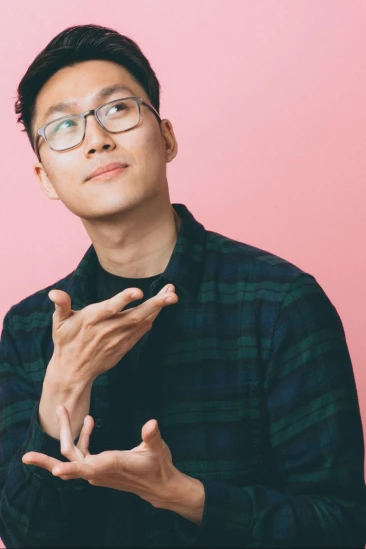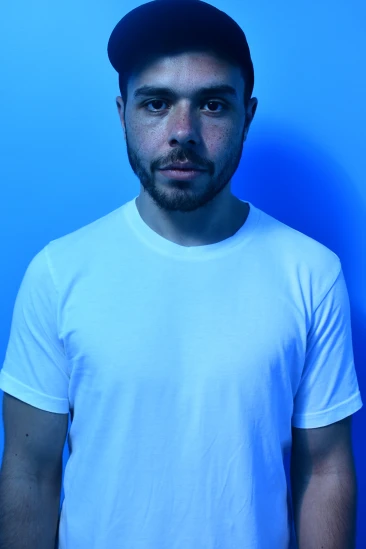What led you into design?
Growing up, I had a wide variety of interests—from sports to science and math, Indian classical music, public speaking, and art. My weeks were jam-packed with classes, coaching, and activities, and I thrived in this environment.
However, one of my favourite family weekend activities used to be visiting IKEA. I didn’t just love the brightly-coloured furniture and curious knick-knacks; I loved how time passed inside the store. When you entered, everything from the free tiny pencils to measuring tapes made me feel empowered to make my own choices in the store, rather than having a sales rep try to sell me something. The furniture and curated rooms were set up not as mere displays but rather to experience and pretend it was my home. All my five senses were working overtime! As a young person, this was a peculiar interest to have, I was told. So I earmarked this as a possible interest and career I could explore. I didn’t know exactly what people did at IKEA, but apparently, what I was gravitating towards was ‘design’.
Long story short: for university, I found myself in design school, the National Institute of Design—one of the foremost, and definitely the oldest design school in India. Quickly, I realised my aptitude was less in interiors and materials, but more in graphics and typography. So I specialised in graphic design, and the rest is history.
Today, when I think back, I do believe that one of the reasons I love being a designer is because, much like in my childhood, I still get to dabble in a variety of topics, industries, and interests through various clients and projects. So, effectively, I get to do what I love, learn new things, meet ambitious people, and get paid for it?!
What does a typical day look like?
My favourite mornings are slow, sunny, and spent with my partner and cats, Rubix and Jigsaw. I make myself a veritable bucket of South Indian filter coffee and browse the news, catch up on sports highlights, or occasionally, read a book. I mostly work from home, so I try to start working only once I feel warmed up and ready to carpe diem, if you may. Sometimes this is at 8a, sometimes at 11a. Some months, my most productive hours are in the mornings; others, in the evenings. The more I work independently, the more I learn about myself and the variations in my routine. I’ve learned that rather than to fight it, it’s best for me to pay attention and adapt my weekly schedule accordingly.
I have three 2-hour work blocks in a day, so I try to plan my daily tasks accordingly. I allocate an hour once a week for administrative tasks like organising my folders or talking to my accountant. And designated hours in the week dedicated to curation (aimlessly collecting and sorting inspiration), learning (online courses, books, or videos), and working on my first typeface, Panem. I don’t have very set work hours due to the varied time zones of clients, but I try to go by feel—if my brain and body are telling me to stop, and my deadlines can afford it, I oblige.
What's your workstation setup?
Where do you go to get inspired?
I love museums and museum gift shops. So, when I have the luxury to travel, this is one of my favourite ways to spend time and get inspired. At home, I enjoy blogs, documentaries and videos, and podcasts about trendspotting, economics and money, culture and politics. Some of my favourite design podcasts are Ohno Radio by James Edmundson and Designedthisway by Kawal Oberoi. Every is a wonderful newsletter about topics that somehow seem to always be at the top of my mind. The books I read are usually big and visual, so not so much reading, but I love Caps Lock and The Politics of Design by Ruben Peter, and everything that comes out of the brains of Elliot Ulm and Adam J. Kurtz—they are so funny. Some of the designers whose work I love and deeply admire are Sanchit Sawaria, Khyati Trehan, Noemie Le Coz, Adam Ho, Haruko Hayakawa, Charlota Blunarova, Ben Grandgenett and Aarman Roy. There’s a lot of sports and sports documentaries like The Last Dance that have miraculously inspiring effects on me.
Overall, I’d say I’m a big believer that the more time I spend away from design inspiration, the more inspired my designs become.
What product have you recently seen that made you think this is great design?
Depends on how you define ‘product’, but the end credit sequence of a recent Netflix series, Guns and Gulaabs, is a recent personal favourite. Conceived by creative genius and (a good friend), Aarushi Jain, the sequence is clever, visually delightful and executed with great care. The names of the cast appear as hand-drawn typography in a nostalgic, retro aesthetic, each one referencing quirks of their respective characters on the show. I believe this is great design because it reimagines something as underrated and often ignored as an end credit sequence of a film or show, turning it into an opportunity to be witty, memorable, and engage with the audience.
What pieces of work are you most proud of?
There are 3 projects I want to highlight for different reasons.
First up is Curio. Curio is a gaming studio, and I recently worked on their brand identity. The identity was crafted to encapsulate the company’s vision ‘Gaming beyond limits’, pioneering innovation in gaming and blockchain technology. Fresh after my stint at Type@Cooper, I created a custom wordmark for Curio, designed to be modular and mechanical, symbolising the limitless and dynamic spirit of gamers and builders. The vibrant visual system spans across colour, typography and an array of graphical elements, embodying the brand’s spirit of being opinionated, experimental and cutting-edge. The reason I’m proud of this outside the work itself is because, from the get-go, I made it a personal challenge to optimise only for having a good time, and I think that really translated into the work.
Next is BX, the brand experience design program I’ve created and teach. It’s an online program for early-career designers to learn about brand, design and storytelling. I’m really proud of BX because of how it extends outside of myself—through the amazing work all the students get to do. We’ve had 2 editions so far, with over 100 students. Many of them have gone onto joining the design teams of tech companies, design studios and agencies.
And finally, Questbook was my first official project as an independent practitioner. A project full of firsts—my first workshop, first brand strategy project, first-time facilitating, first user study and many more. All I had were gracious clients and the tenacity of wanting to figure it out. I ferociously googled, sought help and advice from those who’ve done this before and trusted my instincts. I’m also proud of the trust I was able to build with the clients to move forward with the bravest of the brand directions we explored—an identity created around the hero’s journey, with builders as the central figures and Questbook as their guiding force—fostering their transition from web2 to web3. Questbook continues to be one of the projects I’m most proud of, both for the identity and for it being my very first.
What design challenges do you face at your company?
As a studio of one, my challenges are exactly what you’d imagine—
- I miss working in teams: I do often collaborate with other designers and specialists, but the feeling of working with team members over years rather than months, towards a shared goal, with shared allies, nemeses and challenges is something I miss. I also miss having ‘work friends’. I think they’re a special genre of friends that are hard to come by otherwise.
- I make the rules, so I can break, change or ignore them: Routine, hobbies, mental health, burnout and vacations—they can all be tricky. As a human person I’m understandably not always at 100%, but this shouldn’t somehow affect the quality of my work and professionalism. So, learning to identify early signs of fatigue and lack of inspiration has become so important. I have to make active efforts to take breaks and foster hobbies, since they aren’t naturally built into neither—this format of working or my personality. As someone who genuinely enjoys what she gets to do for work, why do I need hobbies, amirite?
What music do you listen to while designing?
Any advice for ambitious designers?
Last year, I attended Type@Cooper to study type design, one of my lifelong dreams. When my classmates and I were sketching designs for our typefaces, we wondered how we’d make something original—it seemed like every typeface already existed in some sense. Our instructor said, “No two people draw a straight line the same way”, and I was floored. He was so right.
The only style worth having is one that just happens. If you focus on making good things, you’ll do it in a distinctive and unique way. As cliché as it is, it’s the only sustainable and enjoyable way of doing this thing that is the creative pursuit.
Anything you want to promote or plug?
In 2024, I’m hoping to do more public speaking, teaching and sharing. As brands are becoming increasingly prominent in product companies and tech startups in India, I believe I have some unique insights, work, opinions and lived experiences I'd love to share.
My areas of expertise and interest range across: brand experience design, branding for startups/product companies, setting up internal brand design teams, storytelling and brand narratives, running a studio of one, typography, and branding for web3.
If you’re looking for a fresh perspective on any of these topics for your conference, talk series, fireside chat, panel discussion or event—please hit my inbox at snehasanks@gmail.com or via Twitter at @snehasanks. I promise to make it curated, engaging, memorable (and optionally, spicy).















